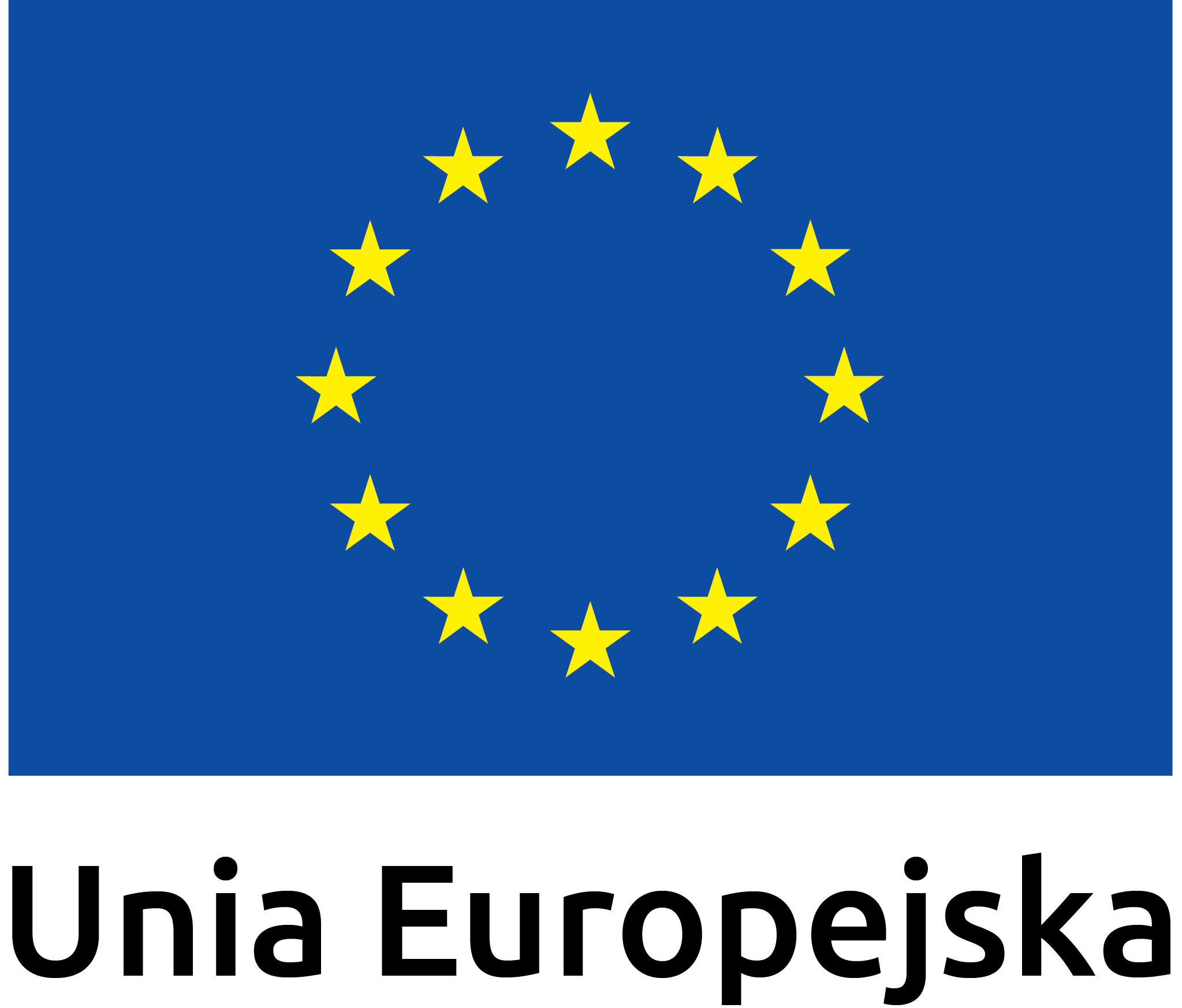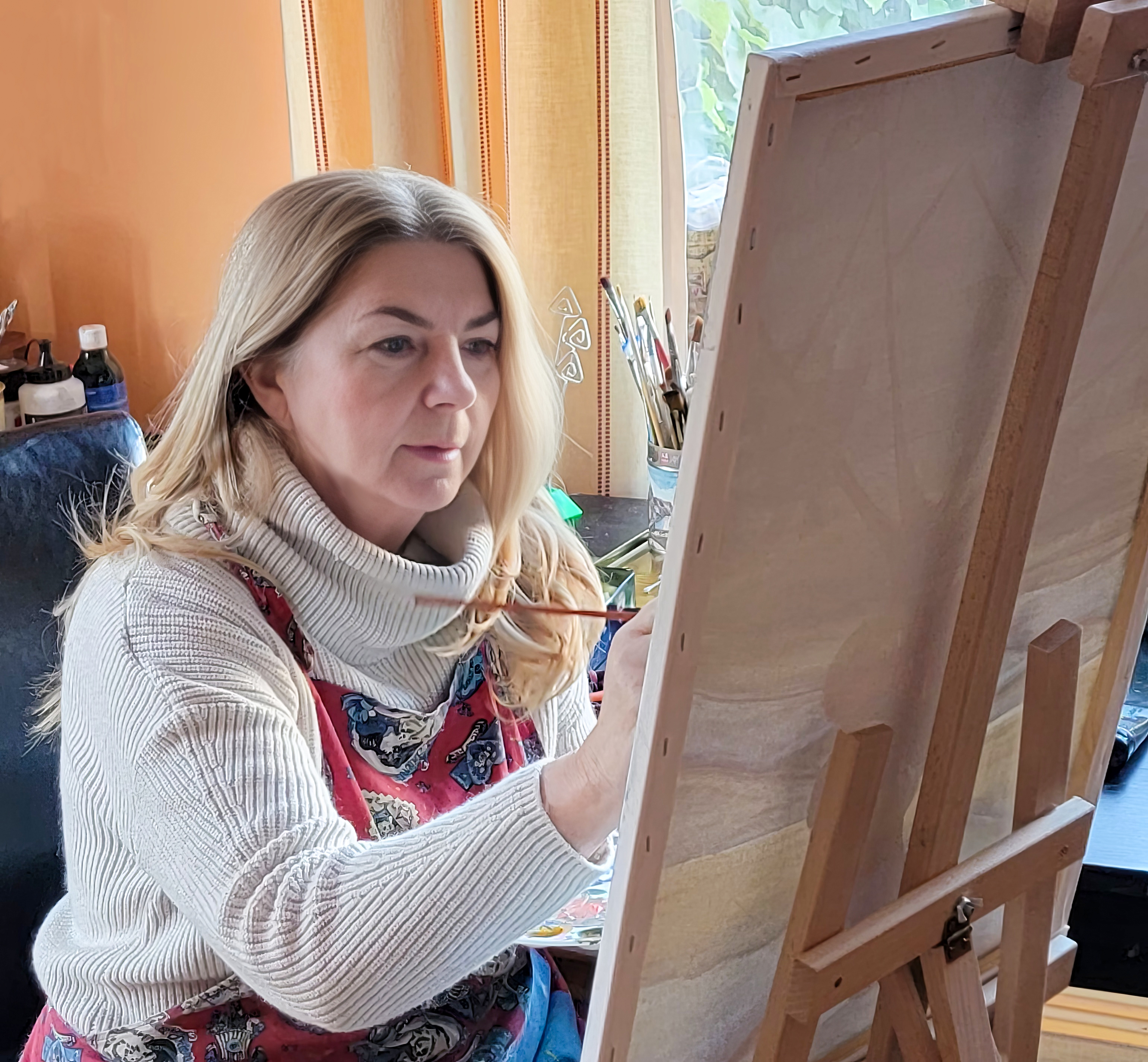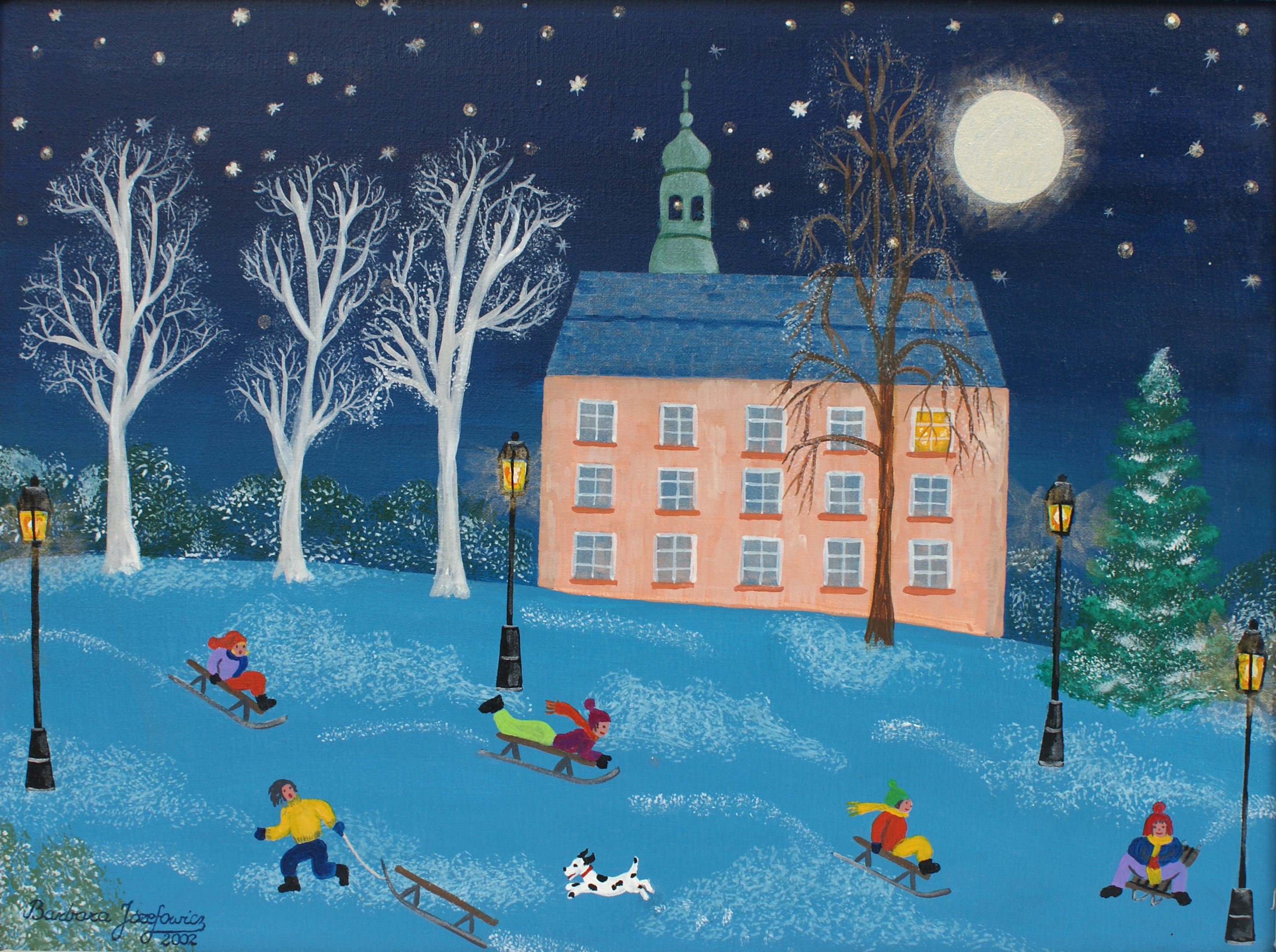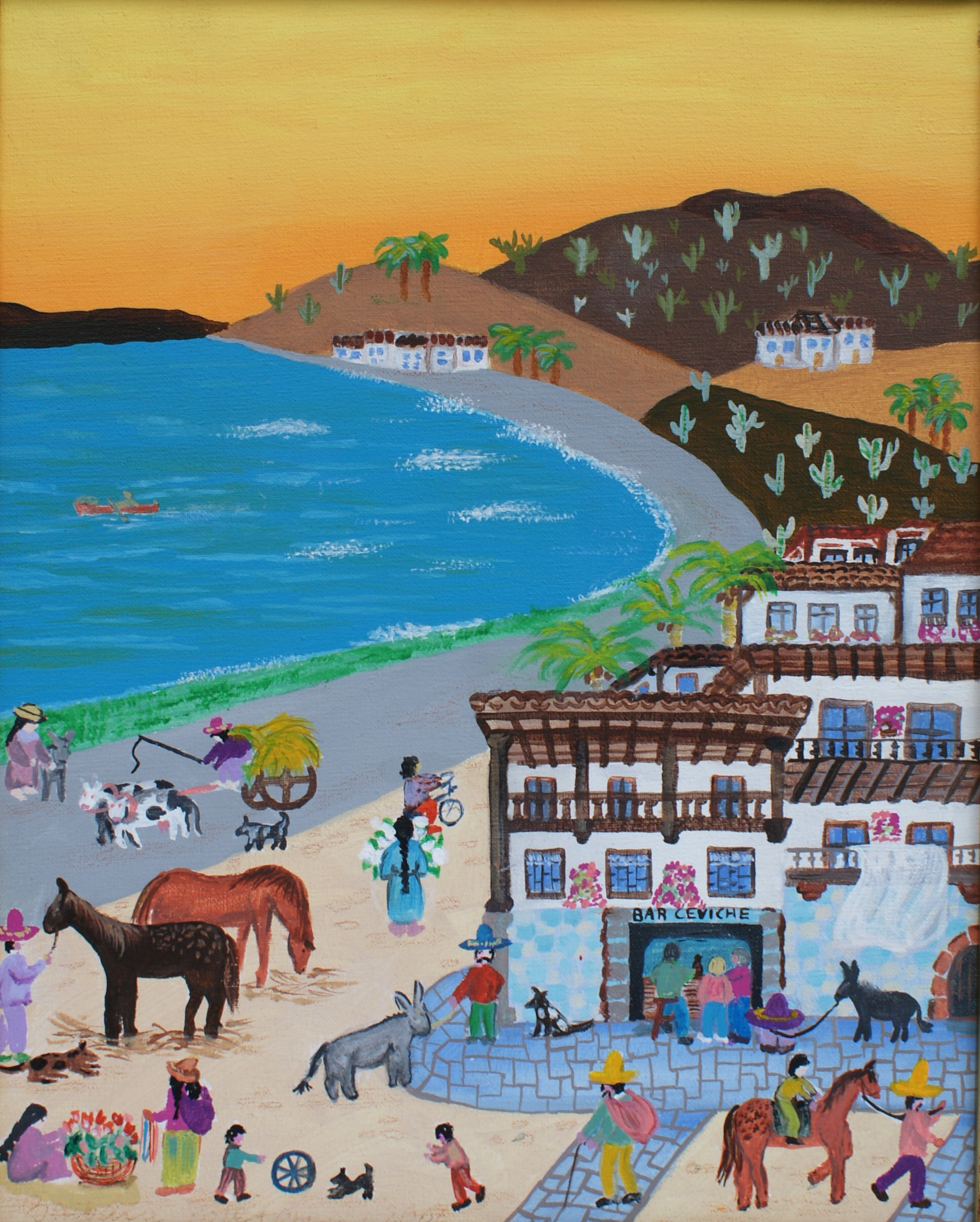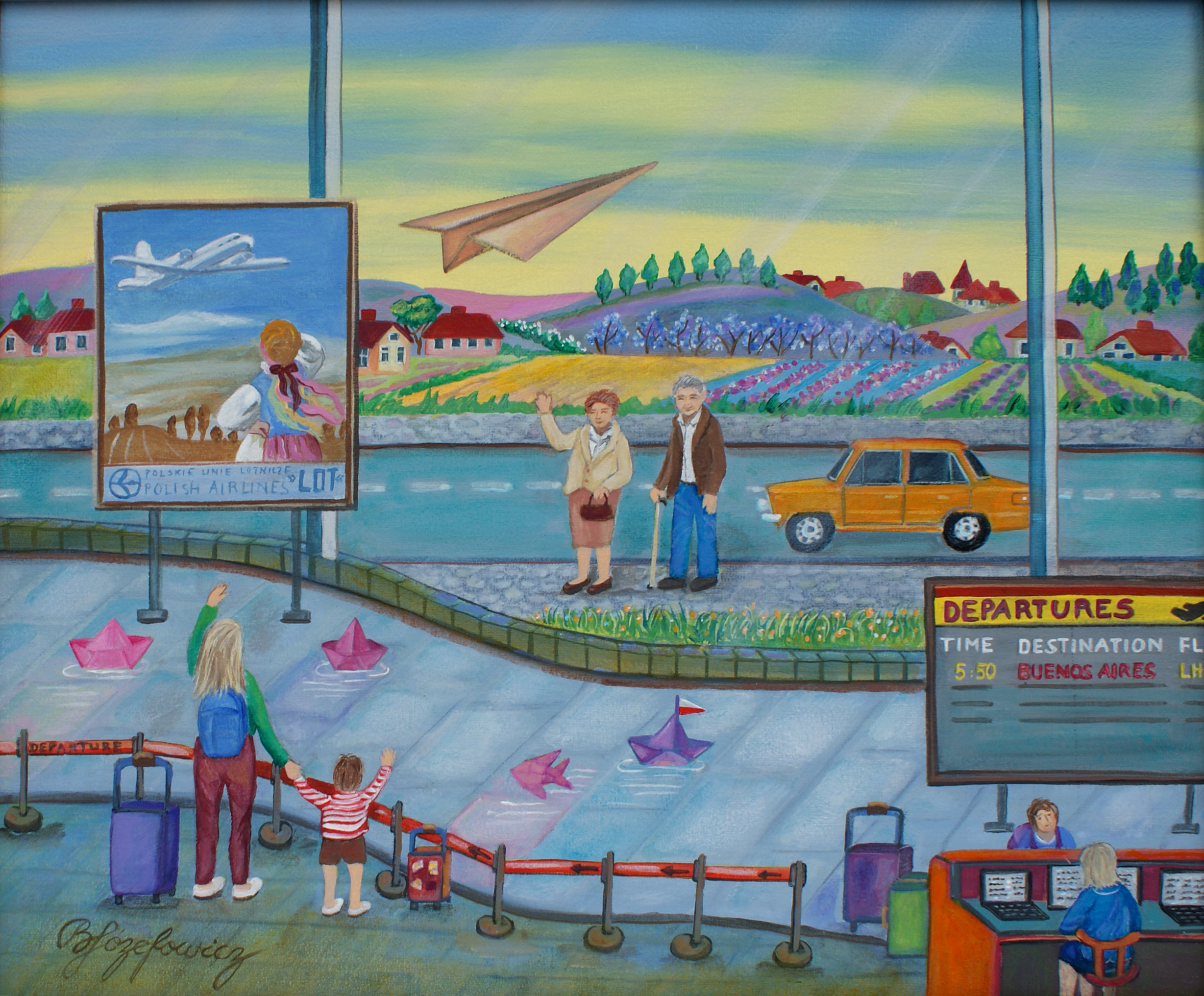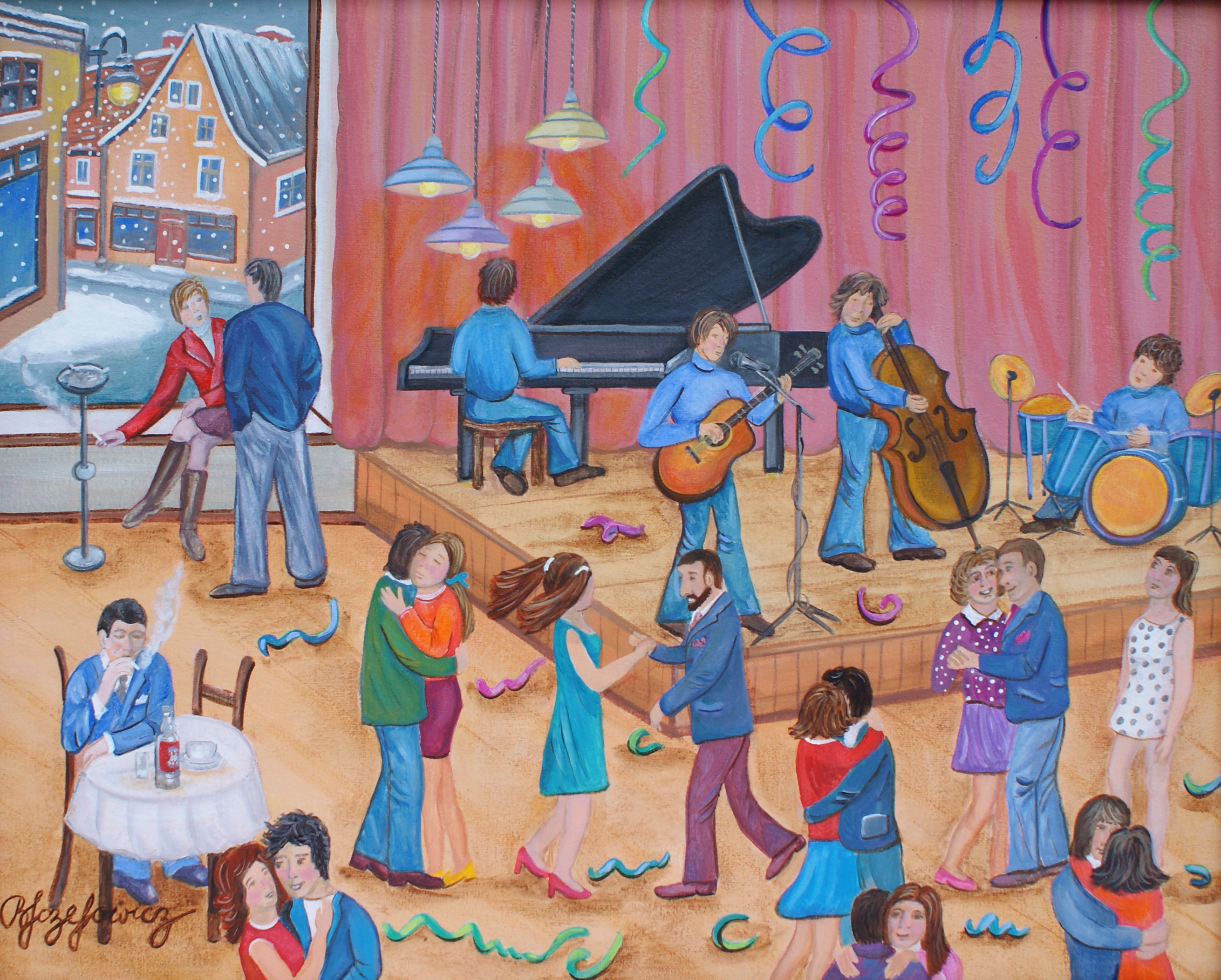Exhibition
Barbara Józefowicz, a painter with family ties to Jasło, is currently one of the most valued Polish painters practicing art naif. The exhibition at the Nikifor Museum, to which we cordially invite you, is an opportunity to get to know her work.
Barbara Józefowicz, a painter with family ties to Jasło, is currently one of the most valued Polish painters practicing art naif. The exhibition at the Nikifor Museum, to which we cordially invite you, is an opportunity to get to know her work.
She comes from Oleśnica in Lower Silesia, and is a geologist by education. During her studies at the AGH University of Science and Technology in Kraków, she danced and sang in the student folklore group "Krakus". Always full of energy and youthful imagination, she saw her future as both specific and mysterious: "I had some absurd ideas that after graduation I would start drilling for gold in Alaska or anchor somewhere in the North Sea on a drilling platform". In the meantime, she took up professional work as a geologist in Wielkopolska. Field work, "on a drilling rig", associated with living for many weeks in "field" conditions, was quite difficult for the young mother, who she became shortly after graduation. Therefore, when life circumstances created such an opportunity, she and her husband decided to risk a radical
life change, which involved taking up a job and living for a longer period in South America. The period of her stay abroad extended for almost 20 years.
She lived for 5 years in Mexico and 5 years in Argentina, in Buenos Aires, in addition in Cuba,
in Colombia, in the USA and in Canada, and also for some time in Spain and Bulgaria.
life change, which involved taking up a job and living for a longer period in South America. The period of her stay abroad extended for almost 20 years.
She lived for 5 years in Mexico and 5 years in Argentina, in Buenos Aires, in addition in Cuba,
in Colombia, in the USA and in Canada, and also for some time in Spain and Bulgaria.
Mexico in particular made a great impression on her, where she believes that “everyone is born an artist”, although she also experienced the bad sides of life in this country. She began painting systematically around 2002, while living in Argentina. At the same time as painting, she became interested in stained glass. And although painting will always remain the first, she has also achieved success in this field, including a large stained glass window of her own that hung in the parliament of the province of Alberta in Canada, after the author won a competition. Barbara Józefowicz's artistic achievements are impressive today. Her paintings have been presented at exhibitions in many countries. But initially, like many art brut artists, she painted only for herself. When she finally decided to present her paintings publicly, which took place in 2002 in Buenos Aires, her work was quickly appreciated. Her greatest success was the Grand Prix of the International Naive Art Festival in Bratislava in 2020. In an interview for the “Naiva Bratislava” portal, the artist said:
"The need to paint first arose in me from my longing for my home country, Poland. For many years I lived in Latin American countries and I missed Poland very much, its landscape, people, traditions, weather, seasons,
especially winter, which I missed so much in those climates, the smell
of the air, the different color of the world. I think it was this lost love that brought me to painting. /.../ For 10 years my paintings hung exclusively in my home. It was only
Alejandro Pinzón, a wonderful naive Colombian painter, who convinced me that my paintings
must leave the house, attend exhibitions and start a worldly life, because they are worth it.
I am very grateful to him for believing in me." In 2022, the World Organization of Integrated Artists awarded her the title of Honorary Ambassador of Polish Culture in Mexico. Thanks to her knowledge of several
languages, she maintains artistic contacts with creative associations from different
countries. This makes it easier for her to frequently present her works at exhibitions abroad. However,
she also greatly appreciates the fact that she has been appreciated as a painter both in her native Oleśnica,
as well as in the Podkarpacie region, in Jasło, where her husband comes from and where they settled permanently after returning to Poland.
The content and style of Barbara Józefowicz's paintings refer to the works of
classics of the naif art genre, such as Jarosław Miklasiewicz or Bronisław Krawczuk.
Emotionally, the closest to her painting seems to be the work of Marta Kołodziej, a well-known
painter from Nowy Sącz, also connected in life and art with France and Switzerland.
"The need to paint first arose in me from my longing for my home country, Poland. For many years I lived in Latin American countries and I missed Poland very much, its landscape, people, traditions, weather, seasons,
especially winter, which I missed so much in those climates, the smell
of the air, the different color of the world. I think it was this lost love that brought me to painting. /.../ For 10 years my paintings hung exclusively in my home. It was only
Alejandro Pinzón, a wonderful naive Colombian painter, who convinced me that my paintings
must leave the house, attend exhibitions and start a worldly life, because they are worth it.
I am very grateful to him for believing in me." In 2022, the World Organization of Integrated Artists awarded her the title of Honorary Ambassador of Polish Culture in Mexico. Thanks to her knowledge of several
languages, she maintains artistic contacts with creative associations from different
countries. This makes it easier for her to frequently present her works at exhibitions abroad. However,
she also greatly appreciates the fact that she has been appreciated as a painter both in her native Oleśnica,
as well as in the Podkarpacie region, in Jasło, where her husband comes from and where they settled permanently after returning to Poland.
The content and style of Barbara Józefowicz's paintings refer to the works of
classics of the naif art genre, such as Jarosław Miklasiewicz or Bronisław Krawczuk.
Emotionally, the closest to her painting seems to be the work of Marta Kołodziej, a well-known
painter from Nowy Sącz, also connected in life and art with France and Switzerland.
Painting is a very personal experience for Barbara Józefowicz. Each painting is connected with some real experience, e.g. meeting someone, travelling, memories of childhood, memories of places and times gone by, grandmother's stories, observation of natural phenomena, participation in folk holidays and rituals and carnivals, whether in Poland or South America, etc. Usually, some painterly, dynamic "action" takes place on the canvas, involving several, and sometimes many characters. Among them, the painter herself often appears. For example, when looking at the painting, we easily feel the atmosphere of a youth "party" from the 1970s; young people dance to the songs of "Czerwone Gitary" played on a Bambino record player, girls in "mini" dresses, some in "banana dresses", and boys in black glasses, in colorful shirts, in "flare" trousers, with long hair like the Beatles. Sometimes the autobiographical element is very clear - here is the legendary
"Morskie Oko" on Krupówki, on the wall a poster announcing a performance
of the student song and dance group "Krakus", with the exact date given: December 4,
1979. On the porch of the venue a young couple: a girl in regional costume
and a man in an elegant white sheepskin coat - this is probably the painter herself with her future
husband. Or a cluttered yard with a car repair shop, next to it
Warszawa and Syrena waiting to be repaired, but the handymen spend more time on
a bench under a tree, from where you can almost hear their excited voices, because they are
constantly fortifying themselves with something. The painter could mention all of them by name
and surname, because they were regulars in this yard. They could not have guessed that after many years
they would be immortalized in painting.
Such scenes and such courtyards were rarely documented, whether in painting or
even in photography. Back then, when they were something everyday, no one thought it was worth
doing. For us, this world was fading away into the past unnoticed, but
the painter, who came to Poland only occasionally, every time, as
she confesses, "returned to a different Poland". She missed this "homely" world,
certainly not as rich materially, but so close to her emotionally. So she creates
from memory, far from home, a painterly documentation of the recent past of the Polish
"peripheries" /in the most positive sense of the word/, whose relics
are inexorably fading away into oblivion. We can therefore say that the painting
of Barbara Józefowicz has an artistic-ethnographic character.
"Morskie Oko" on Krupówki, on the wall a poster announcing a performance
of the student song and dance group "Krakus", with the exact date given: December 4,
1979. On the porch of the venue a young couple: a girl in regional costume
and a man in an elegant white sheepskin coat - this is probably the painter herself with her future
husband. Or a cluttered yard with a car repair shop, next to it
Warszawa and Syrena waiting to be repaired, but the handymen spend more time on
a bench under a tree, from where you can almost hear their excited voices, because they are
constantly fortifying themselves with something. The painter could mention all of them by name
and surname, because they were regulars in this yard. They could not have guessed that after many years
they would be immortalized in painting.
Such scenes and such courtyards were rarely documented, whether in painting or
even in photography. Back then, when they were something everyday, no one thought it was worth
doing. For us, this world was fading away into the past unnoticed, but
the painter, who came to Poland only occasionally, every time, as
she confesses, "returned to a different Poland". She missed this "homely" world,
certainly not as rich materially, but so close to her emotionally. So she creates
from memory, far from home, a painterly documentation of the recent past of the Polish
"peripheries" /in the most positive sense of the word/, whose relics
are inexorably fading away into oblivion. We can therefore say that the painting
of Barbara Józefowicz has an artistic-ethnographic character.
She likes to paint "Impressions from childhood, when the world seemed big and colorful, and all the people were good and happy". The subjects of the paintings are
most often the outskirts of the "big world". Various small-town or rural
backyards and alleys, both in Poland and in America, squares with gauchos in sombreros,
by horses, in front of bars for men called cantinas. There are also
Lemko accents, which the painter could have encountered in her youth, because it was in Lower Silesia that the Lemkos displaced from the Carpathians in 1947 were settled.
Józefowicz turns back time, takes us to the mountains, to the still happy, snow-covered Lemko region, with an ancient wooden church and a cemetery
with characteristic Orthodox stone crosses. A sleigh ride arrives at the church, and children enjoy skiing and sledging. It is hard to believe
that this painting, so evocatively reflecting the winter atmosphere of the old
Lemkivshchyna, was painted in Colombia. In turn, the Polish "Christmas", with carol singers, with "Polish" devils and angels, with the Three Kings,
was created in Buenos Aires.
most often the outskirts of the "big world". Various small-town or rural
backyards and alleys, both in Poland and in America, squares with gauchos in sombreros,
by horses, in front of bars for men called cantinas. There are also
Lemko accents, which the painter could have encountered in her youth, because it was in Lower Silesia that the Lemkos displaced from the Carpathians in 1947 were settled.
Józefowicz turns back time, takes us to the mountains, to the still happy, snow-covered Lemko region, with an ancient wooden church and a cemetery
with characteristic Orthodox stone crosses. A sleigh ride arrives at the church, and children enjoy skiing and sledging. It is hard to believe
that this painting, so evocatively reflecting the winter atmosphere of the old
Lemkivshchyna, was painted in Colombia. In turn, the Polish "Christmas", with carol singers, with "Polish" devils and angels, with the Three Kings,
was created in Buenos Aires.
Painting is a form of storytelling for her. As she confesses, "I could write a story for each painting. But it's hard to torment people with your stories.
It's better when someone looks at my painting and smiles. They'll put their story under
the painting."
"They say that in order to see the whole painting well, you have to go beyond its frames.
My painting is an attempt to go "beyond the frames" of myself and look
from a perspective, an attempt to define my own feelings, emotions, to understand
what is important to me. Perhaps, if it weren't for art, I would never
know what's really playing in my soul."
Zbigniew Wolanin
It's better when someone looks at my painting and smiles. They'll put their story under
the painting."
"They say that in order to see the whole painting well, you have to go beyond its frames.
My painting is an attempt to go "beyond the frames" of myself and look
from a perspective, an attempt to define my own feelings, emotions, to understand
what is important to me. Perhaps, if it weren't for art, I would never
know what's really playing in my soul."
Zbigniew Wolanin
